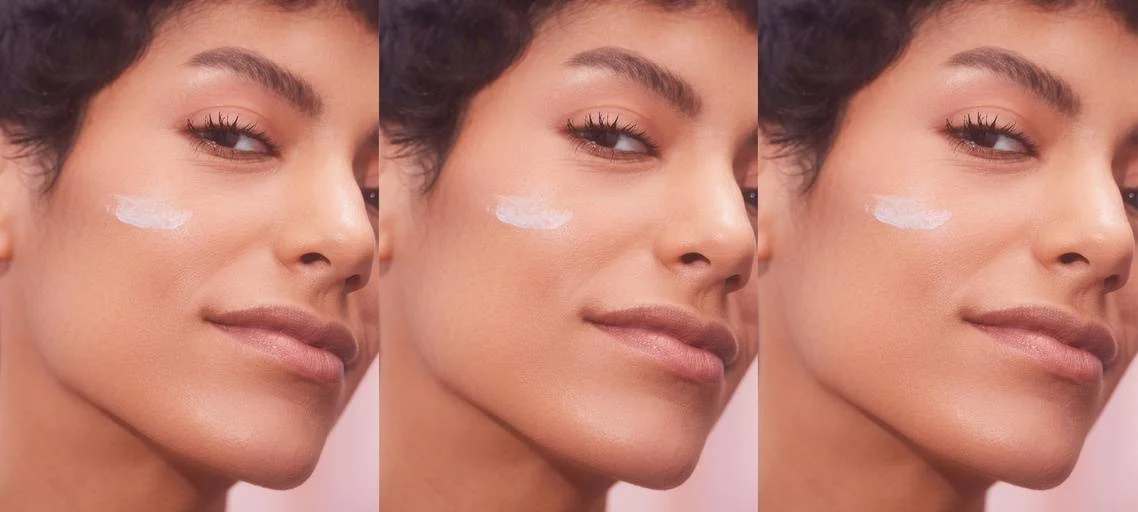Using the wrong sunscreen can damage your skin Even the best sunscreen won’t fully protect you if you don’t apply it appropriately. Use these tips to make sure you’re protected. Sunscreen is one of the best products you can use to protect your skin from the heat. A good sunscreen with excellent UVA and UVB blocking can shield you from sunburn, delay the onset of wrinkles and other signs of age, and reduce your risk of skin cancer, according to the U.S. Food and Drug Administration (FDA). The Skin Cancer Foundation estimates that each year in the United States, more than five million new cases of basal cell carcinoma and squamous cell carcinoma are discovered. The American Academy of Dermatology (AAD) suggests applying broad-spectrum, water-resistant sunscreen with an SPF of 30 or higher. Board-certified dermatologist Sandy Skotnicki, MD, founder and medical director of Bay Dermatology Center in Toronto, and author of Beyond Soap, advises using a mineral sunscreen with zinc and titanium for daily use. Mineral sunscreens, also known as physical sunscreens, shield the skin from the sun’s rays and are often less irritating and more hydrating than chemical sunscreens, which operate by soaking up the rays and converting them to heat in the body, claims Piedmont Healthcare.
You’ve found the perfect container, but your work is not yet done. Too many applicants succeed in messing up the procedure by omitting important details, recording only the absolute minimum, and more. The most serious effect of not applying sunscreen is skin cancer, but this is not the only reason to do so. Sunburns damage the skin’s blood vessels and cells, which can make skin look older, more wrinkled, dehydrated, discolored, and leathery. The aging effects of the sun, in Dr. Skotnicki’s opinion, are a significant factor in the significance of diligent sunblock use. Numerous major studies have shown that frequent use of sunscreen can delay the appearance of photoaging symptoms like redness, brown patches, and wrinkles.
Here, medical professionals go over the most frequent sunscreen errors individuals make and how to avoid them.
Sponsered3
1. You Ignore the Expiration Date
Have you constantly applied sunscreen from the same bottle? You can be putting your skin in danger. The FDA requires sunscreen to have a three-year shelf life. The level of security listed on the container may not then be provided after that. Check the expiration date before applying, and if you can’t find one, assume it will expire three years from the purchase date. The AAD suggests writing the purchase date on the container so you can keep track.
2.You Don’t Spread Your Sunscreen Smoothly Enough
Sponsered3
If you don’t evenly apply the sunscreen, you won’t get the protection that’s promised on the package. Use with caution and thoroughly cover all exposed areas if you want the best coverage. Spray sunscreens that don’t require rubbing can address this problem; just use caution when applying. Sprays are useful, but it’s not always obvious if you’ve covered all open spaces, according to the AAD. The Skin Cancer Society recommends sprinkling until your entire body is covered in a sheen.
3.You Ignore Vital Regions
Despite the fact that it’s imperative to protect all skin that will be exposed to the sun, there are a few locations where people frequently neglect to apply sunscreen. According to a study that was published in April 2019 in the journal PLoS One, over 20% of study participants forgot to apply sunscreen on their eyelids and these participants were unaware that they had done so. It is alarming that the eyelid epidermis has the highest prevalence of skin cancer per unit area. Due to their low melanin content—the protective pigment that gives skin, hair, and eyes their color—lips are another usually disregarded area that is vulnerable to harm. Lip gloss alone is a big no-no, says Doris Day, MD, a clinical assistant professor of dermatology at the New York University Langone Medical Center in New York City. She claims that the more moist your cheeks are, the easier it is for UV radiation to enter exposed skin. According to the Skin Cancer Foundation, shiny, wet lips attract dangerous UV rays. That is comparable to putting baby oil on the skin.
Sponsered3
4. You don’t put on sunscreen until you’re already at the beach.
If you apply sunscreen while standing in ankle-deep sand, you should expect to look like a lobster when you return home. Leslie Baumann, MD, a dermatologist in Miami, advises applying sunscreen at least 20 minutes before going outside because it takes that long for the protective ingredients to reach your skin. Spread it evenly around your body before donning clothing to avoid missing any regions.
5. You’re Too Stingy When Applying Your Sunscreen
Sponsered3
To attain the advertised SPF, more than a little drop is required. According to Skotnicki, most people use too little sunscreen, which can lead to wrinkles and a lower SPF. On days when you’re going to the beach, the AAD advises applying at least 1 ounce (a shot glass full) of sunscreen to your entire body. If you’re unsure about how that appears, you can utilize hacks. Sunshotz, a portable sunscreen measurement cup ($8.49, Sunshotz.com), is one option. Ross Radusky, MD, a board-certified dermatologist and medical assessor for Everyday Health, developed the product. The Skin Cancer Society suggests saving up a nickel-sized amount for your skin.
6.When it’s cloudy, you forego sunscreen
The AAD claims that even when the sun’s UV radiation is not visible, 80% of it still reaches your skin. However, only 20% of Americans apply sunscreen on cloudy days, according to the AAD. Sunscreen should always be used outside, regardless of whether there is cloud cover, as windows block UVB sunlight but mostly let UVA rays through. “People’s perceptions of how much light they receive are erroneous. Dr. Kaufman claims that they are ignorant of the fact that sunbathing doesn’t necessitate reclining on the sand. He advises placing your sunscreen right next to your toothbrush to help you remember to use it every day.
Sponsered3
7.You Avoid Reapplying Your Sunscreen
Only approximately 33% of Americans reapply sunscreen as frequently as recommended, leaving the skin exposed, according to an AAD study published in May 2021. The medical director of the Center for Dermatology Care in Thousand Oaks, California, and a clinical assistant professor of medicine at UCLA School of Medicine in Los Angeles, Andrew Kaufman, MD, argues that it is not a magic potion that will keep you protected forever. The golden rule is to reapply sunscreen at least every two hours, and more often if you exercise hard or go swimming. According to FDA regulations, even “water resistant” sunscreens only maintain their SPF for up to 80 minutes. (According to the FDA, water-resistant sunscreens’ stickers will state whether they are still effective after 40 or 80 minutes submerged.) Resubmitting your application will also help you receive a more equitable distribution, according to Skotnicki.
Sponsered3




